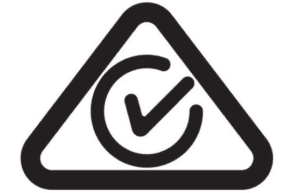

Owners corporations and bodies corporate preventing the installation and use of EV charging equipment in strata developments will hold back electric vehicle uptake in Australia says the AEVA.
Founded after the oil price shock in 1973, the Australian Electric Vehicle Association is the world’s longest continuously running EV society. Its goal is to see Australia’s transport networks switching to electric vehicles as soon as possible.
Among the barriers to this happening are owners corporations and bodies corporate that refuse allowing installation of EV chargers, often based on fire safety grounds. With at least one in six Australians living in strata-titled properties such as apartments and units, such bans have the potential to negatively impact many current and future EV owners.
But according to EV Fire Safe, a private firm supported by the Australian Department of Defence to research EV battery fires and emergency response, fire safety fears aren’t backed by data:
“Put simply, in normally operating road-registered EVs, it is electrically impossible for the battery to be overcharged so it catches fire while using an electrically compliant unit that has been installed to standard by a qualified person.”
The organisation has determined the primary causes of damage leading to an EV battery fire are:
- Collision / road debris
- (Extended) submersion
- Recall issues
- External fires
The AEVA wants to the ‘right to charge’ an EV at a person’s home – whether that’s a stand-alone dwelling, townhouse, unit or apartment – enshrined in harmonised legislation across Australia.
“There are no good reasons why this should not be permitted by default by an owners corporation,” said Dr. Chris Jones, AEVA National President. “Such rights are common throughout Europe, Scandinavia and parts of America.”
Dr Jones says the ACT leads the way in Australia, with the Territory’s Unit Titles (Management) Act forbidding any owners corporation rule that unreasonably prohibits or restricts the installation or operation of sustainability infrastructure – and this includes EV chargers.
EV Battery Fires *Very* Uncommon
EV Fire Safe’s initial research based on global EV battery fires from 2010-2020 indicates a 0.0012% chance of a passenger electric vehicle battery catching fire (all causes). While determining internal combustion engine (ICE) passenger vehicle fires globally is difficult, based on various country reports the organisation suggests there is a 0.1% chance of an ICE vehicle catching fire; so much more likely.
But while rare, EV traction battery fires can be very challenging to deal with. They burn hotter, spew toxic gases, and thousands of litres of water is required to cool the battery and suppress flame. And if it’s not possible to allow the traction battery to ‘burn out’, it can reignite hours or days later.
EV Fire Safe has published a guide to suppression methods.
Electric Bikes And Scooters Need Special Attention
It’s a different situation with e-micromobility devices, such as scooters and e-bikes. There have been a number of fires involving these personal electric vehicles, sometimes caused through using incorrect or poor quality aftermarket chargers imported into the country.
While the AEVA wants to see greater uptake of e-bikes and electric scooters as well, the organisation warns consumers need to be careful to avoid low-quality products.
“Only equipment carrying the Regulatory Compliance Mark should be used, and charging of e-bikes and e-scooters really ought to be done where the risk of fire propagation is low. Ideally, apartments should have a dedicated e-bike and e-scooter charging area,” said Dr. Jones.
The Regulatory Compliance Mark (RCM) looks like so:


There has been some progress on this front, for example in New South Wales. Since the beginning of February this year, lithium-ion based e-micromobility devices sold in the state must comply with prescribed safety standards.
For strata-living EV owners facing charging challenges such as ornery owners associations (and other hurdles), SQ has published a comprehensive guide to strata charging.






